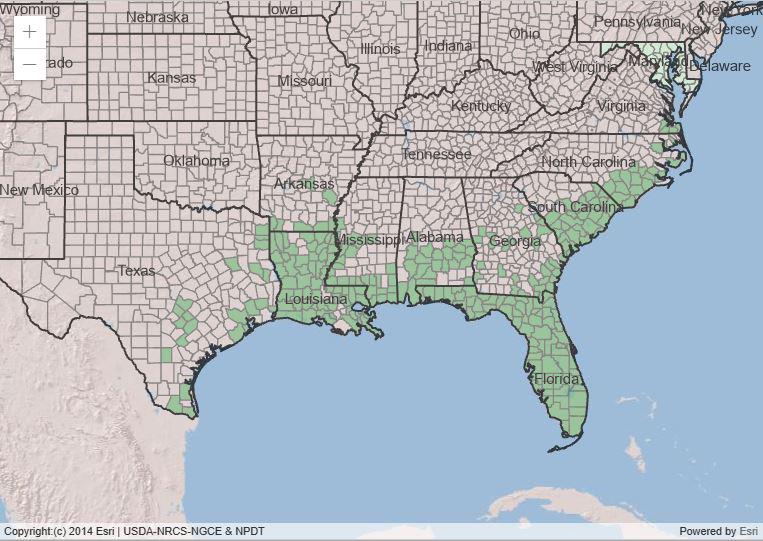Range of Spanish Moss in the USA Map


Marcus Rodriguez
Historical Geography Expert
Marcus Rodriguez specializes in historical cartography and geographic data analysis. With a background in both history and geography, he brings unique...
Geographic Analysis
What This Map Shows
The "Range of Spanish Moss in the USA Map" visually depicts the geographic distribution of Spanish moss (Tillandsia usneoides), a fascinating epiphytic plant that drapes itself over trees in a distinctive, ethereal manner. This map illustrates not just where Spanish moss thrives but also highlights the specific climatic and ecological conditions required for its growth. It’s interesting to note that while many might think of Spanish moss as a ubiquitous feature across the United States, its actual range is more limited than one might expect, primarily concentrated in the southeastern U.S.
Deep Dive into Spanish Moss
Spanish moss is not actually a moss but a bromeliad, belonging to the family Bromeliaceae. This plant is commonly associated with the southern United States, where it creates a picturesque canopy in forests, swamps, and along coastal areas. Spanish moss thrives in warm, humid environments, which is why it flourishes in states such as Florida, Louisiana, and Texas. The plant absorbs moisture and nutrients from the air and rain, attaching itself to tree branches without harming the host tree.
What’s fascinating is that Spanish moss plays a vital role in its ecosystem. It provides habitat and nesting material for various bird species, including the great horned owl and the red-shouldered hawk. The delicate strands of moss also serve as a microhabitat for insects and small organisms, contributing to the biodiversity of the regions where it grows.
Interestingly, Spanish moss has adapted to a range of conditions, but it does have its limits. It requires specific light and humidity levels, thriving in areas that experience mild winters and warm summers. The plant is sensitive to extreme weather, such as severe cold or prolonged drought, which can significantly impact its health and distribution.
Regional Analysis
The map clearly delineates the primary regions where Spanish moss can be found: the southeastern states. Florida, in particular, boasts the most extensive growth, with its humid subtropical climate being an ideal environment for this plant. From the swamps of the Everglades to the oak-lined streets of cities like Savannah and New Orleans, Spanish moss is a hallmark of southern charm.
In Louisiana, the presence of Spanish moss is often linked to the state’s unique bayou ecosystems, where the moist air and abundant tree cover create an ideal habitat. Comparatively, Texas has a more varied distribution, with Spanish moss found primarily in the eastern part of the state where conditions are similar to those of Louisiana and Florida.
Interestingly, while Spanish moss is prevalent in the Southeast, it is rarely found outside of this region. The map illustrates how the plant’s range diminishes significantly moving northward and westward, with its presence becoming almost non-existent in states like California and the Pacific Northwest. This is primarily due to climatic changes, including cooler temperatures that are unsuitable for its growth.
Significance and Impact
Understanding the range of Spanish moss is crucial for various ecological and conservation efforts. As a bioindicator, its health can reflect the overall condition of the environment. Changes in its distribution may signal shifts in climate or habitat loss, making it an important species to monitor.
Moreover, Spanish moss has cultural significance in many southern communities, often associated with the region's identity and heritage. It contributes to the aesthetic appeal of landscapes, influencing tourism in places like New Orleans and Savannah. As climate change continues to impact ecosystems globally, monitoring the health and distribution of Spanish moss can provide insights into broader environmental changes.
With rising temperatures and shifting weather patterns, will Spanish moss continue to thrive in its current range? Or will we see it migrate further north or decline in areas where it once flourished? These are pressing questions for ecologists as they study the implications of climate change on native flora and fauna. The future of Spanish moss may very well serve as a barometer for the health of southern ecosystems in years to come.
Visualization Details
- Published
- October 10, 2025
- Views
- 38
Comments
Loading comments...